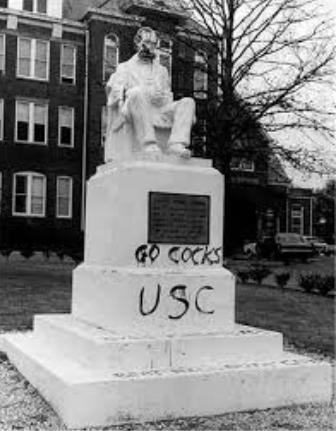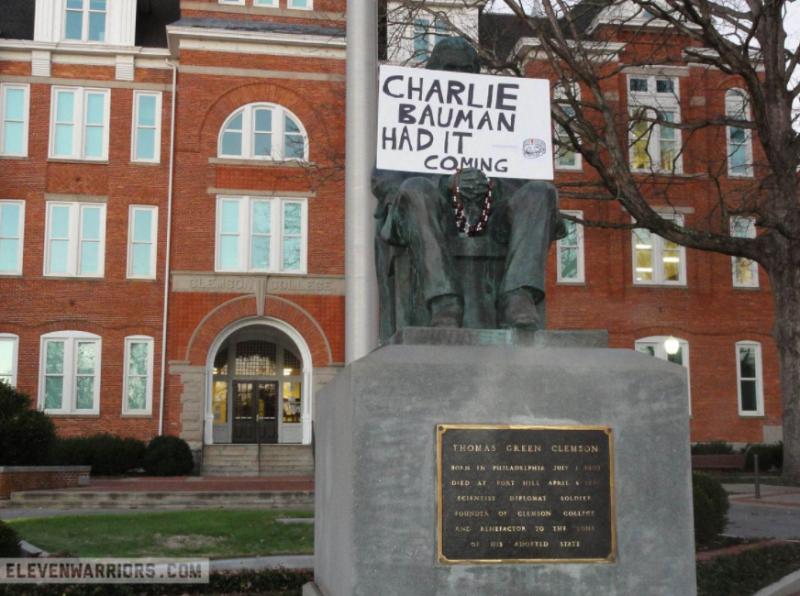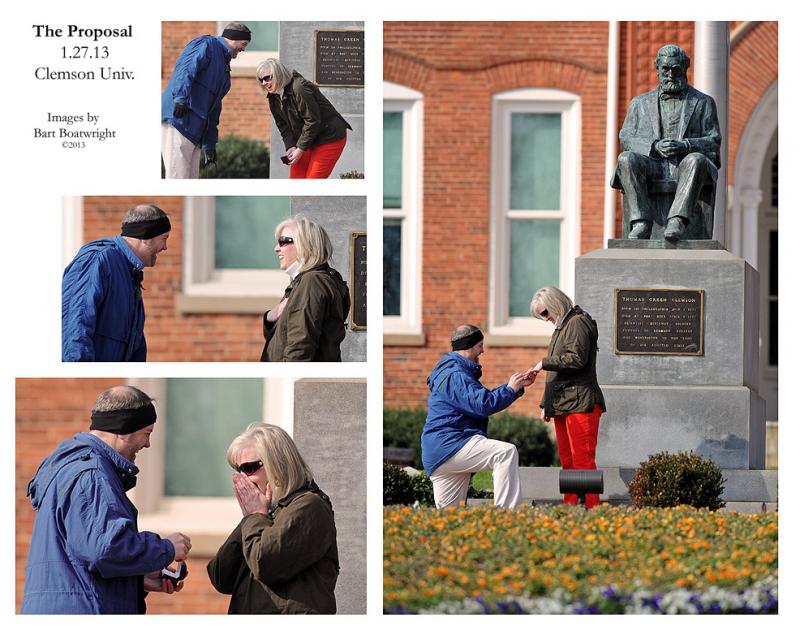Pranks, Protests, and a Proposal
As this project has shown, since its arrival on campus in 1941, the statue of Thomas Green Clemson has served as a lightning rod for both criticism and local cultural activity. Historian Erika Doss offers one reason as to why memorials like Thomas Clemson attract so much attention. It is because memorials are “archives of public affect”: they are public “‘repositories of feelings and emotions,’” argues Doss (Doss, Memorial Mania, 13). This emotive notion is engrained into every stone and bronze sculpture. Thus, because of this emotive notion, effigies easily become centers for public attention. As the pictures displayed here show, this attention towards the memorial of Thomas Green Clemson has not waned but, instead, increased over the years. Moreover, in the last thirty years, thanks in part to the rise of the Internet and social media, the statue has been at the center of pranks, protests, and even a marriage proposal.




